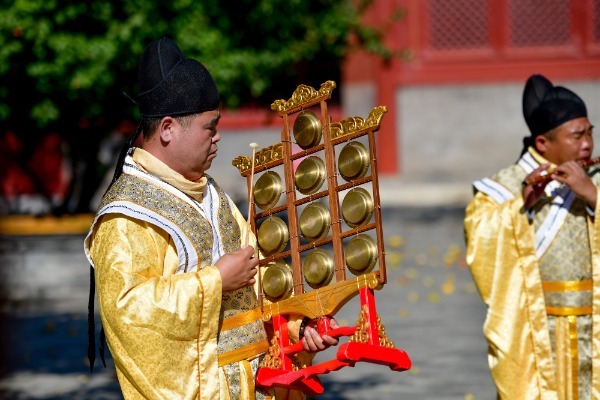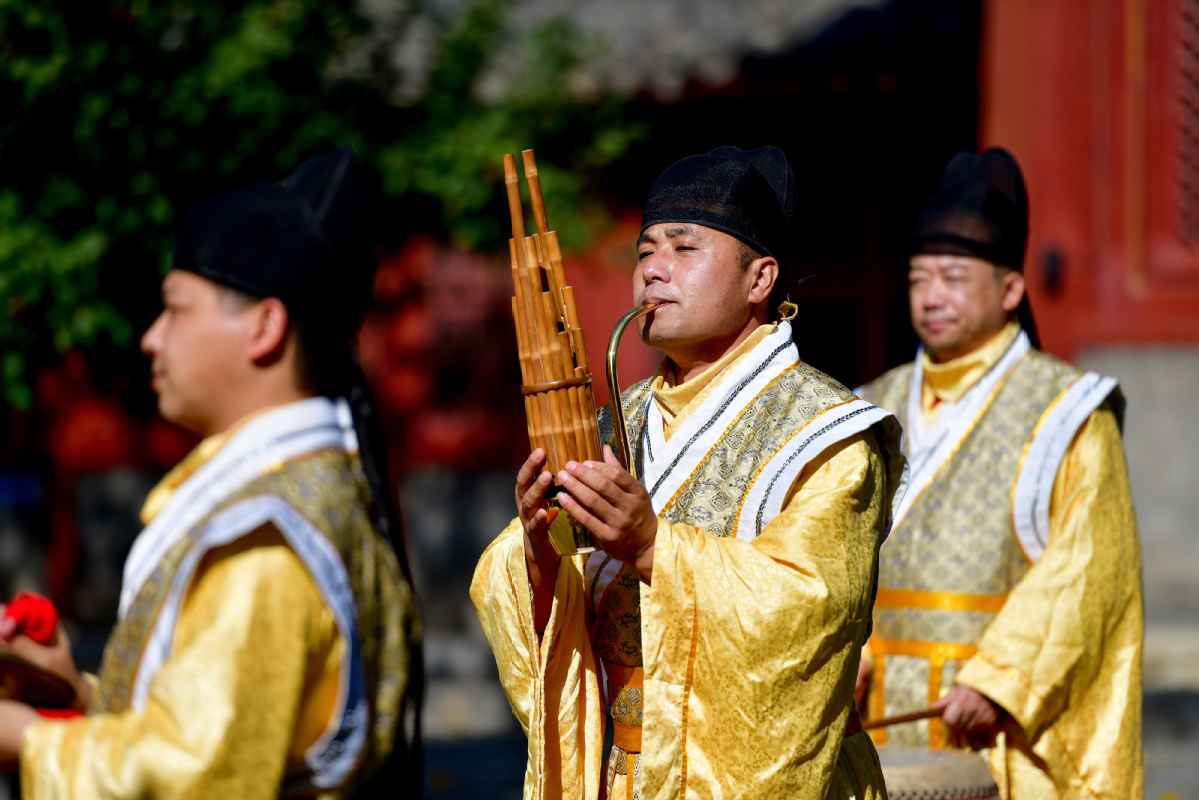

In the present day, though, Hu's performance includes mostly original songs, with many being examples of Ming Dynasty court music that have been passed down, and a few adapted from percussion instrument musical scores from Qujiaying.
The instruments for performing the Zhihua Temple's Jing Music mainly include the bili (pipe), flute, yunluo (a set of gongs), sheng (Chinese reed wind instrument consisting of bamboo pipes) and drums. Sometimes other percussion instruments, such as cymbals of varying sizes, will participate.
The band is similar to that of the royal court ensembles. Among them, the pipes take a leading role, among which is Hu's instrument.
"We try to create an experience with our visitors, to get them involved with the music during the 15-minute performance, to build a connection between musicians and the audience," Hu says.
Hu's band now performs in art colleges and at various music festivals across the country. However, a major concern for Hu is the selection of the right successor to carry the ancient music's torch into the next generation.
"Though Jing Music has been inherited for centuries, we are facing challenges introducing younger listeners to this fine music and finding right people to follow in our footsteps," he says.
"To learn the music demands far more than mere patience. It requires a great deal of time studying the musical notation, as well as its long history and cultural tradition," he adds.
Around five years ago, Hu selected several percussion apprentices from Qujiaying, among other places, to study Jing Music at the temple.
"But they didn't persist with it for too long, quitting within three years," says Hu.
"I'm patient and will wait for the right person, and I believe there is someone who is destined to be the next inheritor of Jing Music."
In 2006, the Zhihua Temple's Jing Music was among the first folk arts to be inscribed on the national intangible cultural heritage list.
